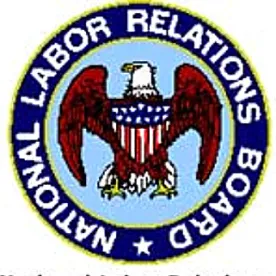The National Labor Relations Board’s (NLRB) General Counsel (GC) has issued an Advice Memorandum on whether unfair labor practice charges alleging four employer rules violated the National Labor Relations Act (NLRA) have merit. In a Memorandum released on March 14, 2019, the GC concluded that the employer’s dress-code, confidential-information, and media-relations rules were lawful, but its cell-phone rule was unlawful.
Accordingly, the GC instructed the Regional Director to dismiss the unfair labor practice allegations against the lawful rules and to issue a complaint regarding the employer’s cell-phone rule. ADT, LLC, Case 21-CA-209339.
Boeing Test and Categories
For years, the Board scrutinized work rules — even commonplace, commonsense policies — to determine if they could be “reasonably construed” by employees to infringe on NLRA-protected concerted activity. Lutheran Heritage Village-Livonia, 343 NLRB 646 (2004). One after another seemingly innocuous policies were determined to run afoul of this test.
In 2017, in Boeing Co., 365 NLRB No. 154, the Board created a new balancing test for evaluating whether facially neutral work rules might interfere with employees’ Section 7 rights under the NLRA. Under that test, the Board balances: (i) the nature and extent of the potential impact on employee rights against (ii) the employer’s legitimate business justification for the rule.
Significantly, the Board recognized in Boeing a sliding scale among activities protected by the NLRA. Some are fundamental and others “more peripheral.” Further, acknowledging that context matters, the Board noted that different industries and types of work may yield dissimilar results. Therefore, the Board will consider a company’s experiences informing the work rule to ascertain “the purpose served by the rule or the impact of its maintenance on Section 7 rights.”
Under Boeing, the Board established three categories of work rule analysis. (See our article, Labor Board Sets New Standard for Determining Lawfulness of Facially Neutral Workplace Rules.)
“Category 1” are lawful rules that, when “reasonably interpreted,” do not interfere with protected activities, or rules that have a “reasonable tendency” to infringe on employees’ Section 7 rights, but the potential adverse impact is outweighed by employer justifications.
“Category 2” are rules that require closer scrutiny to determine whether, under reasonable interpretation, the rule would interfere with Section 7 rights, and if so, whether the adverse impact is outweighed by legitimate business justifications.
“Category 3” are unlawful rules that would prohibit or limit Section 7 conduct and are not outweighed by justifications associated with the rule.
The GC assessed the four work rules that were the subject of unfair labor practice charges by applying the new criteria and concluded each of the rules fell into “Category 2.”
Dress-Code Rule
The employer’s corporate dress code (like many others’) required that employees present a “professional, business-like appearance.” The dress code included a comprehensive 22-point list of inappropriate attire. One point prohibited wearing “[a]ny items of apparel with inappropriate commercial advertising or insignia.”
Prior to Boeing, the Board likely would have found the rule unlawful because employees might reasonably construe a ban on “wearing insignia” to include union insignia.
Under Boeing, the GC determined the rule was lawful because employees would understand that “inappropriate” insignia is defined by the other 21 points delineating “unprofessional” attire. The GC found the employer’s justification — maintaining an environment free of inappropriate language or imagery (for example, language or imagery that may violate the employer’s anti-harassment policy) — outweighed the potential, slight impact on employees’ Section 7 rights.
Confidential-Information Rule
The Board has long held that Section 7 protects employees’ rights to discuss their working conditions, including wages, benefits, and employee contact information. Therefore, the Board frequently has found employer confidentiality policies unlawful because they could be construed as infringing employees’ rights.
Here, the employer policy advised employees they should “exercise a high degree of caution” in handling “Confidential Information.” Confidential Information was defined as:
- Proprietary information owned by or otherwise in the Employer’s possession or control, such as “business plans, internal correspondence, [and] customer lists”;
- “Personally identifiable customer and employee information, including name, address, social security, credit card and bank account numbers, and similarly personally identifiable information”; and
- Information protected by HIPAA.
Although the rule advised employees to be cautious, it restricted dissemination of information only by administrative support, HR, or timekeeping employees who may have access to the company’s records containing personal information concerning employees or confidential information about the company or its customers.
The GC explained this policy was lawful because it did not prohibit employees from sharing information they obtained on their own; it banned only publication of data taken from the employer’s files. The GC said, “Although employees have a strong interest in disseminating employee contact information for Section 7 purposes, the rule’s potential impact on that activity is slight, and the Employer’s business interest therefore outweighs the Section 7 impact.”
Media-Relations Rule
The Board often has held employer policies restricting employees from speaking with the media regarding the company to be unlawful. Section 7 protects employees’ efforts to publicize disputes with their employers.
The employer’s rule here stated that “all information provided to media, financial analysts, investors or any other person outside the [Employer] may be provided only by [Employer] designated spokespersons or [Employer] officers.”
Applying Boeing, and emphasizing review of the rule’s context, the GC found the rule to be lawful. Recognizing the company’s significant interest in ensuring that only authorized employees speak for it, the GC avoided looking at the restrictive sentence in a vacuum, noting from a full reading of the policy that the prohibition did not reach the Section 7 consideration. The GC said, “Employees would reasonably construe it as only limiting who may speak on the Employer’s behalf.” The GC found this rule to be a lawful “because a contextual analysis was required to determine that it merely regulated who may speak on the employer’s behalf.”
Cell-Phone Rule
The employer’s policy banned employee use of cell phones in the workplace, other than for “work-related or critical, quality of life activities.” Although the policy explained the purpose of the rule was to avoid “distraction in the workplace” resulting in “lost time and productivity,” the GC concluded the justification was not adequate to prevent finding the rule unlawful.
Employees always have had the Section 7 right to communicate during non-work time, such as during lunch or breaks, through channels not belonging or monitored by the employer. The blanket ban here clearly prohibited cell phone use during non-work time, so the adverse impact on Section 7 was plain, the GC concluded.
***
The GC’s Memorandum provides insights on how the Board will view workplace policies under Boeing. However, as the Board has indicated, while it is more willing to consider both the context of a work rule and the policy’s business justifications, these cases will continue to be developed on a case-by-case basis.






 />i
/>i

